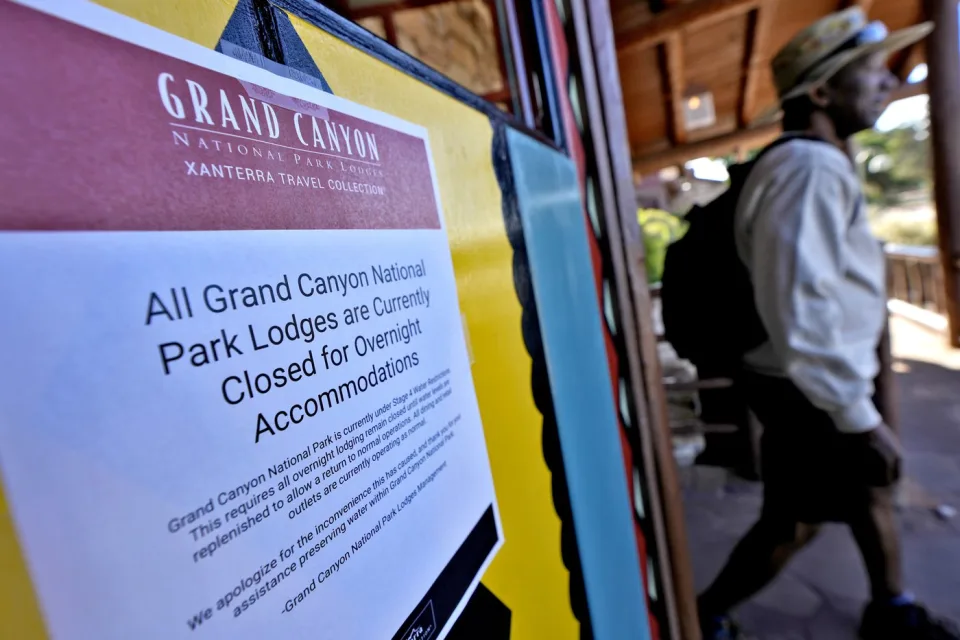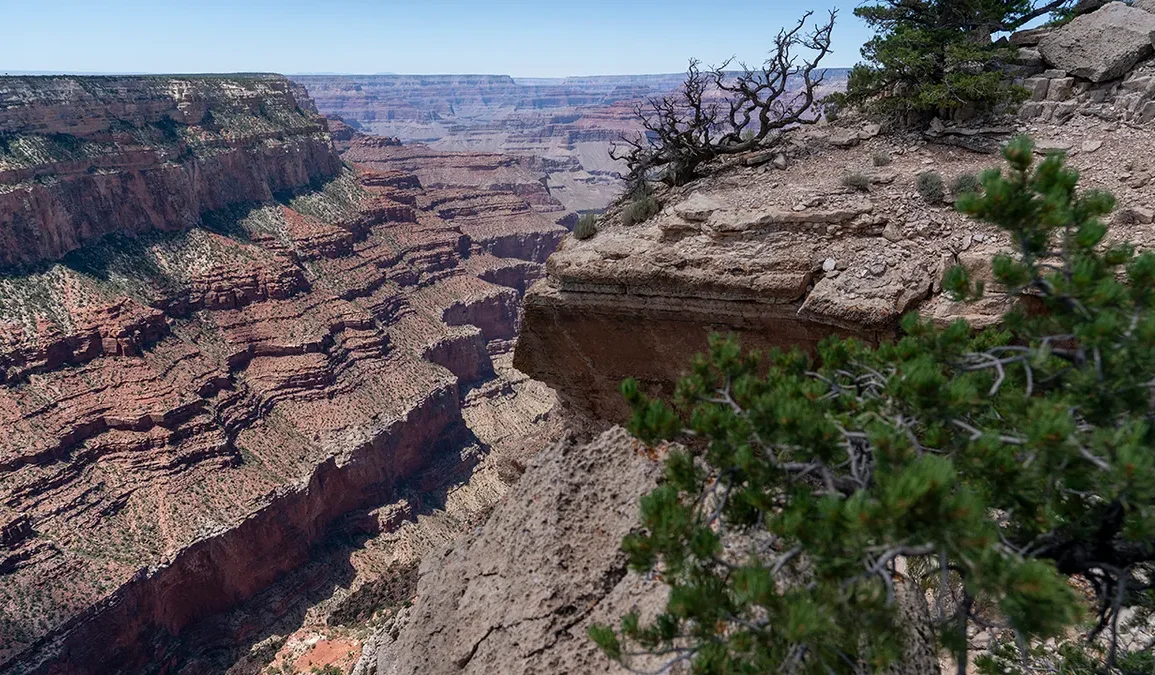The Grand Canyon National Park’s South Rim hotels will be closed to overnight visitors during the Labor Day holiday due to four significant breaks in the Transcanyon Water Distribution Pipeline. This crucial pipeline, built in the 1960s, spans 12.5 miles and supplies water from Roaring Springs on the North Rim to the South Rim via the Havasupai Gardens pump station.
It provides drinking water, fire suppression, and other essential services for both the South Rim and some inner canyon facilities, including over 800 historic buildings.
The pipeline serves a broad population, including the 2,000 year-round residents of Grand Canyon Village, park staff, other employees, and millions of tourists who visit the park annually. However, the pipeline’s aluminum structure, which winds through rugged terrain, is prone to frequent breaks and leaks, primarily caused by internal wear from grit in the water. Each repair to the pipeline typically costs around $25,000.

The Transcanyon Waterline, particularly its sections constructed in the 1930s, has been plagued by significant challenges. The steel pipeline on the North Rim is especially vulnerable to rockfalls and freezing temperatures since it is above ground.
In 2017, a rockslide caused extensive damage to this section, requiring $1.5 million in repairs and leading to a temporary closure of the North Rim lodge, with water needing to be transported in for basic needs.
The aging waterline, which has outlasted its intended lifespan, has seen more than 85 major breaks since 2010, disrupting water supply to the park. The frequent failures have kept the waterline at the top of the maintenance priority list for over a decade. Various engineering studies have been conducted, and portions of park entrance fees have been allocated to address the escalating maintenance costs.
In response to the ongoing issues, the National Park Service has initiated a comprehensive $208 million project to rehabilitate the Transcanyon Waterline and upgrade the associated water delivery system. This extensive rehabilitation effort began recently and is scheduled to be completed by 2027, aiming to ensure a more reliable water supply for the Grand Canyon National Park.

